Discover 35 hidden attractions, cool sights, and unusual things to do in Oslo (Norway). Don't miss out on these must-see attractions: Frogner Park, Akershus Fortress, and Viking Ship Museum. Also, be sure to include Fram Museum in your itinerary.
Below, you can find the list of the most amazing places you should visit in Oslo (Oslo).
Table of Contents
Frogner Park
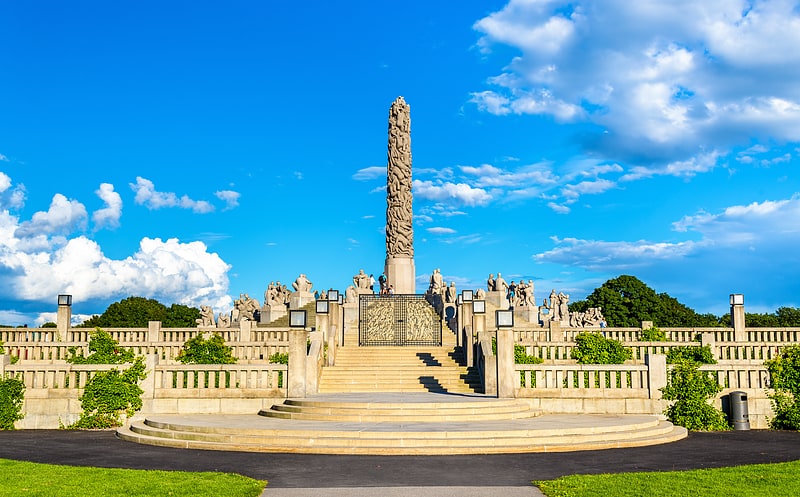
Also known as: Frognerparken
Public park with a museum and sculpture. Frogner Park is a public park located in the West End borough of Frogner in Oslo, Norway. The park is historically part of Frogner Manor, and the manor house is located in the south of the park, and houses Oslo Museum. Both the park, the entire borough of Frogner as well as Frognerseteren derive their names from Frogner Manor.
Frogner Park contains, in its present centre, the Vigeland installation, a permanent sculpture installation created by Gustav Vigeland between 1924 and 1943. It consists of sculptures as well as larger structures such as bridges and fountains. The installation is not a separate park, but the name of the sculptures within the larger Frogner Park. Informally the Vigeland installation is sometimes called "Vigeland Park" or "Vigeland Sculpture Park"; the director of Oslo Museum Lars Roede said "Vigeland Park" "doesn't really exist" and is "the name of the tourists," as opposed to "Oslo natives' more down-to-earth name, Frogner Park."
The park of Frogner Manor was historically smaller and centered on the manor house, and was landscaped as a baroque park in the 18th century by its owner, the later general Hans Jacob Scheel. It was landscaped as a romantic park in the 19th century by then-owner, industrialist Benjamin Wegner. Large parts of the estate were sold to give room for city expansion in the 19th century, and the remaining estate was bought by Christiania municipality in 1896 and made into a public park. It was the site of the 1914 Jubilee Exhibition, and Vigeland's sculpture arrangement was constructed from the 1920s. In addition to the sculpture park, the manor house and a nearby pavilion, the park also contains Frognerbadet and Frogner Stadium. The Frogner Pond is found in the centre of the park.
Frogner Park is the largest park in the city and covers 45 hectares; the sculpture installation is the world's largest sculpture park made by a single artist. Frogner Park is the most popular tourist attraction in Norway, with between 1 and 2 million visitors each year, and is open to the public at all times. Frogner Park and the Vigeland installation was protected under the Heritage Act on 13 February 2009 as the first park in Norway.[1]
Address: Nobels gate 32, 0268 Oslo (Ullern)
Akershus Fortress
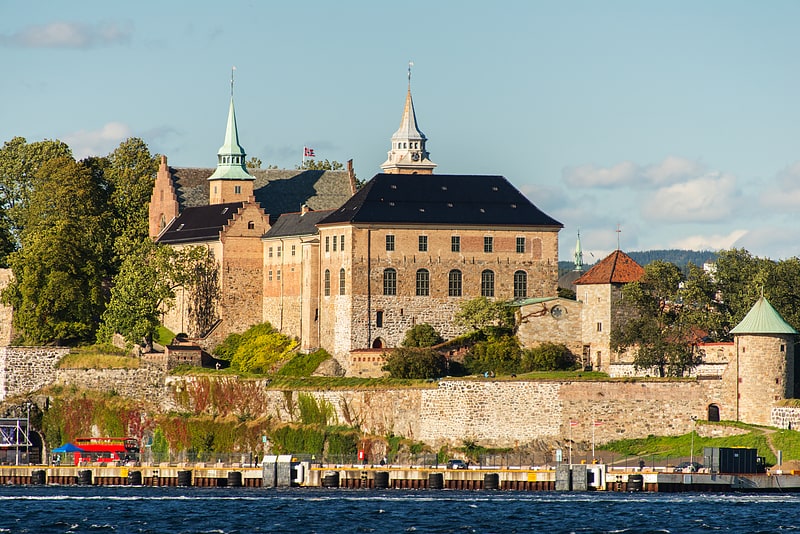
Also known as: Akershus slott og festning
Waterside fortress and former prison. Akershus Fortress or Akershus Castle is a medieval castle in the Norwegian capital Oslo that was built to protect and provide a royal residence for the city. Since the Middle Ages the fortress has been the namesake and centre of the main fief and later main county of Akershus, which was originally one of Norway's four main regions and which included most of Eastern Norway. The fortress itself was located within the Akershus main county until 1919, and also within the smaller Akershus sub county until 1842.
The castle has also been used as a military base, a prison and is currently the temporary office of the Prime minister of Norway.[2]
Address: Akershus festning, Oslo (St Hanshaugen)
Viking Ship Museum
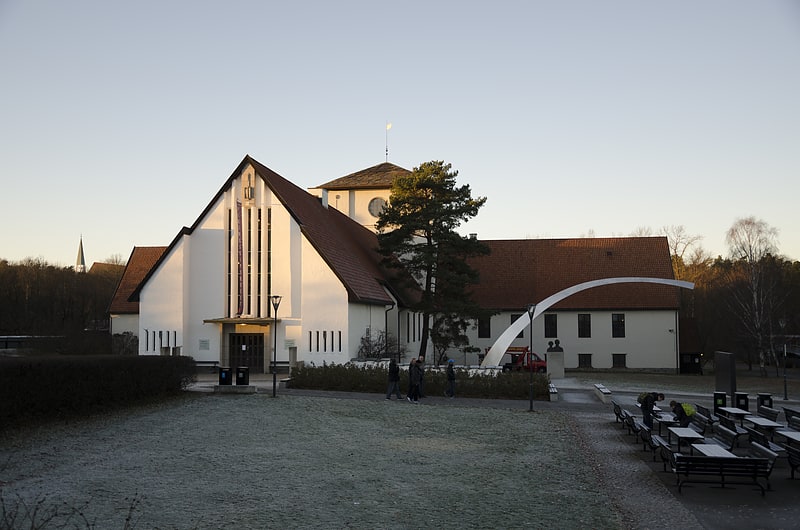
Also known as: Vikingskipshuset
Museum with 3 9th-century Viking ships. The Viking Ship Museum is located on the Bygdøy peninsula in Oslo, Norway. It will be temporarily closed from September 2021 until 2025/2026.
It is part of the Museum of Cultural History of the University of Oslo, and houses three Viking era burial ships that were found as part of archaeological finds from Tune, Gokstad (Sandefjord), Oseberg (Tønsberg) and the Borre mound cemetery.[3]
Address: Huk Aveny 35, 0287 Oslo (Frogner)
Fram Museum
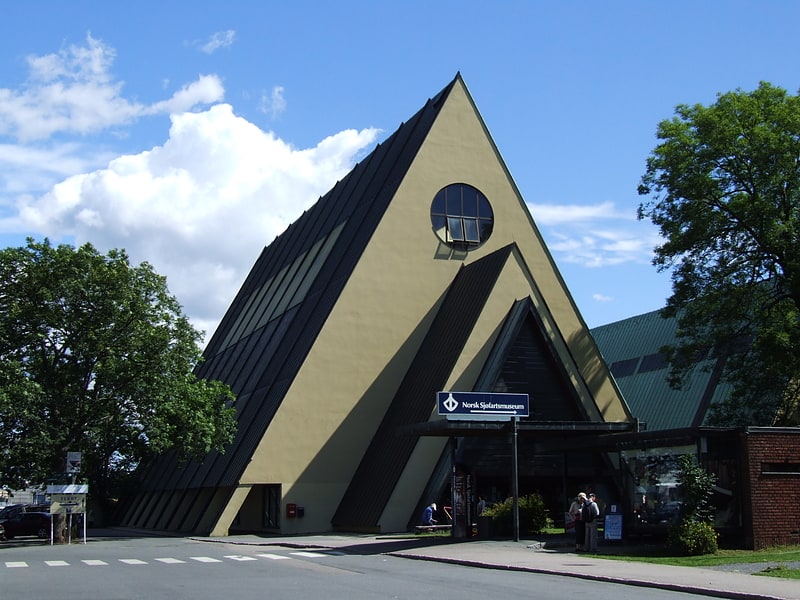
Also known as: Frammuseet
Museum with 19th-century polar ship. The Fram Museum is a museum telling the story of Norwegian polar exploration. It is located on the peninsula of Bygdøy in Oslo, Norway.
Fram Museum is in an area with several other museums including the Kon-Tiki Museum, the Norwegian Museum of Cultural History, the Viking Ship Museum and the Norwegian Maritime Museum. Bygdøy Royal Estate, the official summer residence of the King of Norway, and historic Oscarshall are also located nearby.
The Fram Museum was inaugurated on 20 May 1936. It honours Norwegian polar exploration in general and three great Norwegian polar explorers in particular – Fridtjof Nansen, Otto Sverdrup and Roald Amundsen. The museum also exhibits images of the fauna of the polar regions, such as polar bears and penguins.
The Fram Museum is centred principally on the original exploration vessel Fram. The original interior of Fram is intact and visitors can go inside the ship to view it. Fram was commissioned, designed, and built by Scots-Norwegian shipbuilder Colin Archer to specifications provided by Norwegian Arctic explorer Fridtjof Nansen, who financed the building of the ship with a combination of grant monies provided by the Norwegian government and private funding in 1891.
In May 2009 the Norwegian Maritime Museum and the Fram Museum signed an agreement for the Fram Museum to take over the exhibition of the Gjøa, the first vessel to transit the Northwest Passage. Roald Amundsen and a crew of six accomplished that feat in a three-year journey which was finished in 1906. Gjøa is situated inside her own dedicated building at the museum. In 2017 the ship was made fully accessible to visitors.[4]
Address: Bygdøynesveien 39, 0286 Oslo (Frogner)
Royal Palace

Also known as: Det kongelige slott
Palace in Oslo, Norway. The Royal Palace in Oslo was built in the first half of the 19th century as the Norwegian residence of the French-born King Charles III John of Norway, who reigned as king of Norway and Sweden. The palace is the official residence of the current Norwegian monarch while the Crown Prince resides at Skaugum in Asker west of Oslo.
The palace is located at the end of Karl Johans gate in central Oslo and is surrounded by the Palace Park with the Palace Square in the front.[5]
Address: Slottsplassen 1, 0010 Oslo (St Hanshaugen)
Norsk Folkemuseum
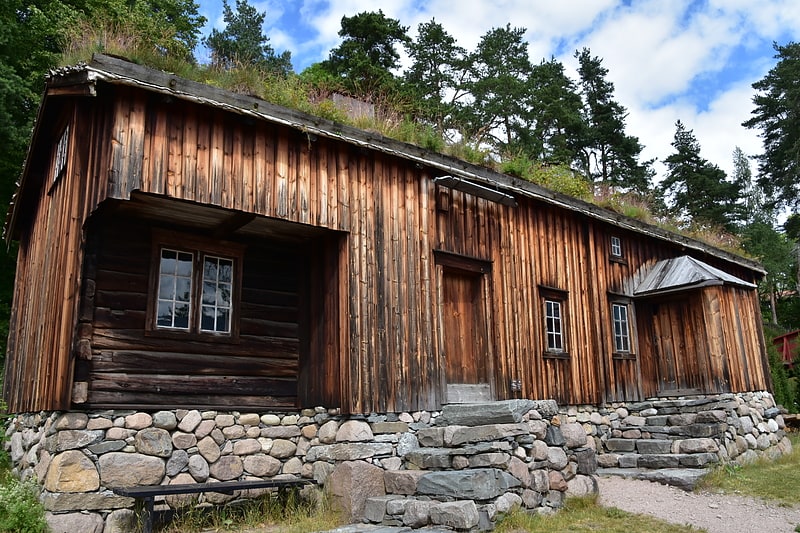
Life in Norway from 1500 to the present. Norsk Folkemuseum, at Bygdøy, Oslo, Norway, is a museum of cultural history with extensive collections of artifacts from all social groups and all regions of the country. It also incorporates a large open-air museum with more than 150 buildings, relocated from towns and rural districts.
The Norwegian Museum of Cultural History is situated on the Bygdøy peninsula near several other museums, including the Viking Ship Museum; the Fram Museum; the Kon-Tiki Museum; and the Norwegian Maritime Museum.[6]
Address: Museumsveien 10, 0287 Oslo (Frogner)
Nobel Peace Center
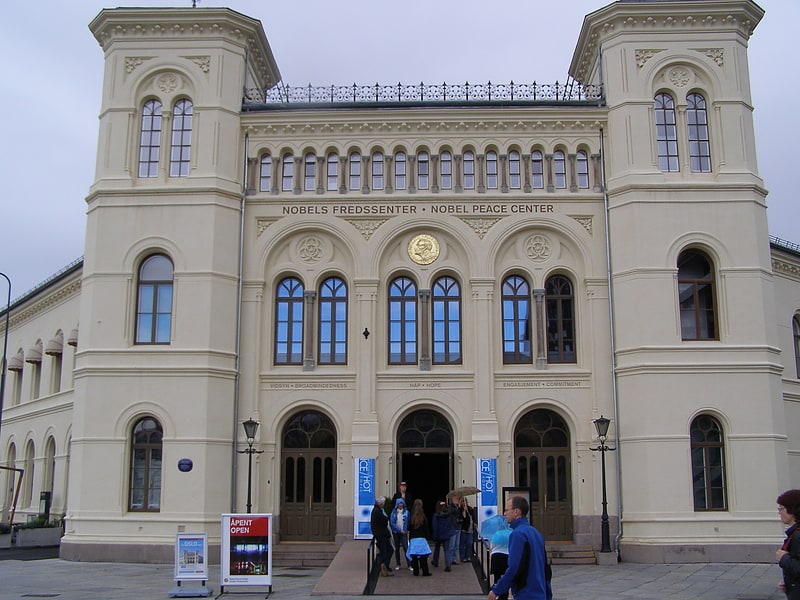
Also known as: Nobels Fredssenter
Nobel Peace Prize museum and events hub. The Nobel Peace Center in Oslo, Norway is a showcase for the Nobel Peace Prize and the ideals it represents. The center is also an arena where culture and politics merge to promote involvement, debate and reflection around topics such as war, peace and conflict resolution. The center is located in Oslo, Norway at the City Hall Square.[7]
Address: Brynjulf Bulls plass 1, 0250 Oslo (Frogner)
City Hall
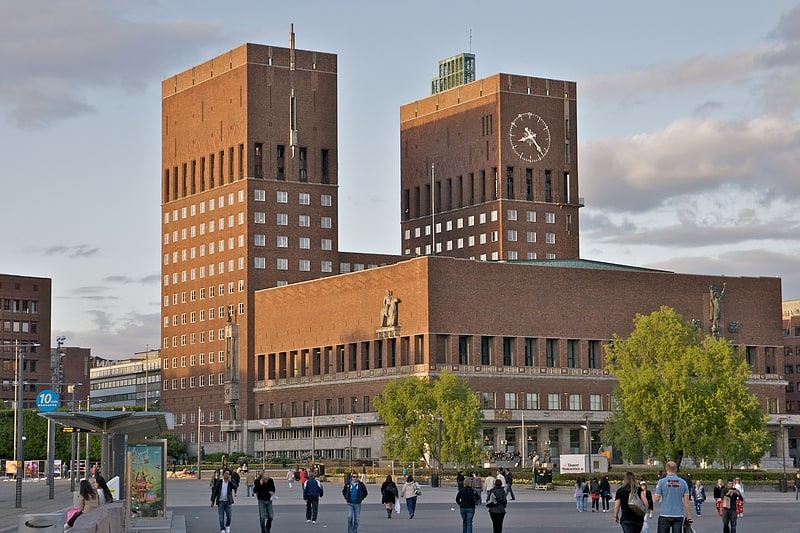
Also known as: Oslo rådhus
1950s building hosting Nobel Peace Prize. Oslo City Hall is a municipal building in Oslo, the capital of Norway. It houses the city council, the city's administration and various other municipal organisations. The building as it stands today was constructed between 1931 and 1950, with an interruption during the Second World War. It was designed by architects Arnstein Arneberg and Magnus Poulsson. The building is located in the city center, in the northern part of the Pipervika neighbourhood, and it faces Oslofjord.
Oslo City Hall is built of red brick and has two towers, one 63 meters tall and other 66 meters tall. The bricks used are larger than what was typical at the time of construction, but are roughly the same size as bricks used in the Middle Ages. The bricks - measuring approximately 27.5 x 13 x 8.5 cm - were produced by Hovin Teglverk in Oslo. The eastern tower has a carillon set of 49 bells. Various events and ceremonies take place in the building, notably the Nobel Peace Prize ceremony, which takes place every December.[8]
Address: Fridtjof Nansens plass, 0037 Oslo (St Hanshaugen)
Oslo Opera House
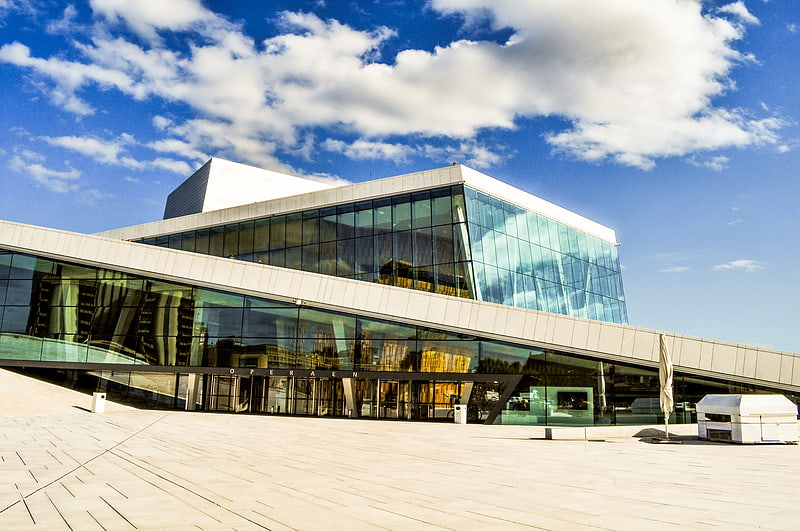
Also known as: Operahuset i Oslo
Theatre in Oslo, Norway. The Oslo Opera House is the home of the Norwegian National Opera and Ballet, and the national opera theatre in Norway. The building is situated in the Bjørvika neighbourhood of central Oslo, at the head of the Oslofjord. It is operated by Statsbygg, the government agency which manages property for the Norwegian government. The structure contains 1,100 rooms in a total area of 49,000 m2. The main auditorium seats 1,364 and two other performance spaces can seat 200 and 400. The main stage is 16 m wide and 40 m deep. The angled exterior surfaces of the building are covered with marble from Carrara, Italy and white granite and make it appear to rise from the water. It is the largest cultural building constructed in Norway since Nidarosdomen was completed circa 1300.[9]
Address: Kirsten Flagstads Plass 1, 0150 Oslo (St Hanshaugen)
Kon-Tiki Museum
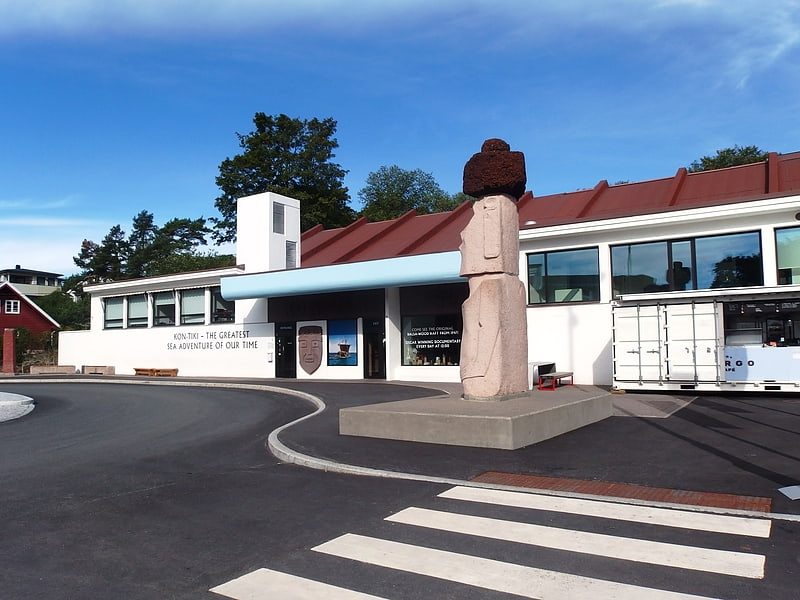
Also known as: Kon-Tiki Museet
Adventurer museum with original boats. The Kon-Tiki Museum is a museum in the Bygdøy peninsula in Oslo, Norway. It houses vessels and maps from the Kon-Tiki expedition, as well as a library with about 8,000 books. It was opened in a provisional building in 1949. In 1957, the current building—designed by architects F. S. Platou and Otto Torgersen—was opened. In 1978, an extension of the museum designed by Torgersen was opened.
The museum was originally built to house the Kon-Tiki, a raft of balsa wood of pre-Columbian model that Norwegian adventurer Thor Heyerdahl used to sail from Peru to Polynesia in 1947. Another boat in the museum is the Ra II, a vessel built of reeds according to Heyerdahl's perception of an ancient Egyptian seagoing boat. Heyerdahl sailed the Ra II from North Africa to the Caribbean after a previous attempt with the reed boat Ra failed.
Beneath the raft is a model of the whale shark that the crew encountered on the voyage.
The Kon-Tiki Museum is situated near several other museums including the Fram Museum, the Norwegian Museum of Cultural History, the Viking Ship Museum and the Norwegian Maritime Museum.[10]
Address: Bygdoeynesveien 36, 0286 Oslo (Frogner)
University Botanical Garden
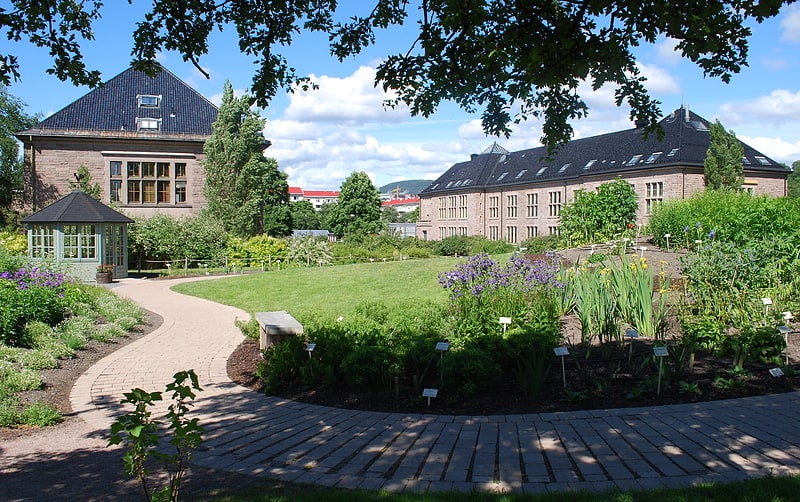
Also known as: Botanisk hage
Sizable botanical garden with a cafe. The University Botanical Garden is Norway's oldest botanical garden. It was first established in 1814 and is administrated by the University of Oslo. It is situated in the neighborhood of Tøyen in Oslo, Norway.[11]
Address: Monrads gate 13A, 0564 Oslo (Grünerløkka)
Ibsenmuseet
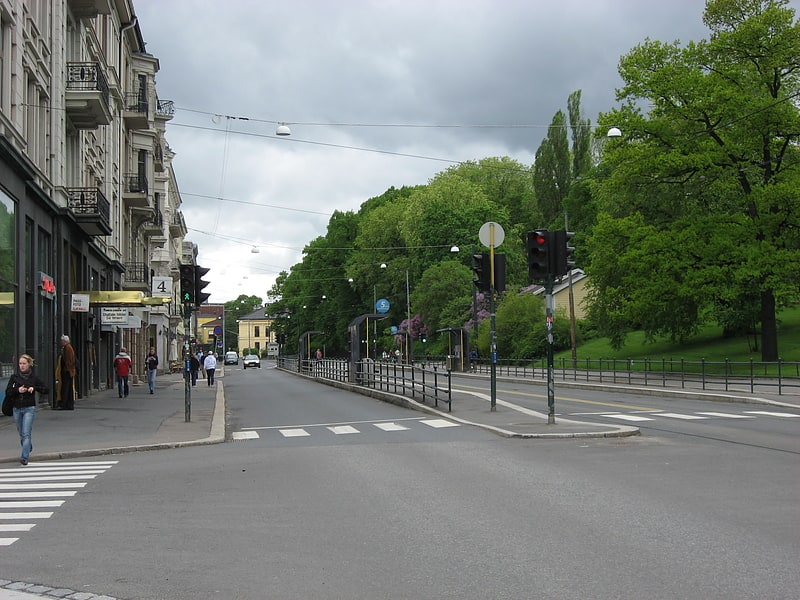
Museum in Oslo, Norway. The Ibsen Museum occupies the last home of the playwright Henrik Ibsen. It is located close to the Royal Palace on Henrik Ibsens gate in Oslo, Norway. The museum in Oslo is closed. According to the website, it will reopen in 2021.[12]
Address: Henrik Ibsens gate 26, 0255 Oslo (St Hanshaugen)
Norway's Resistance Museum
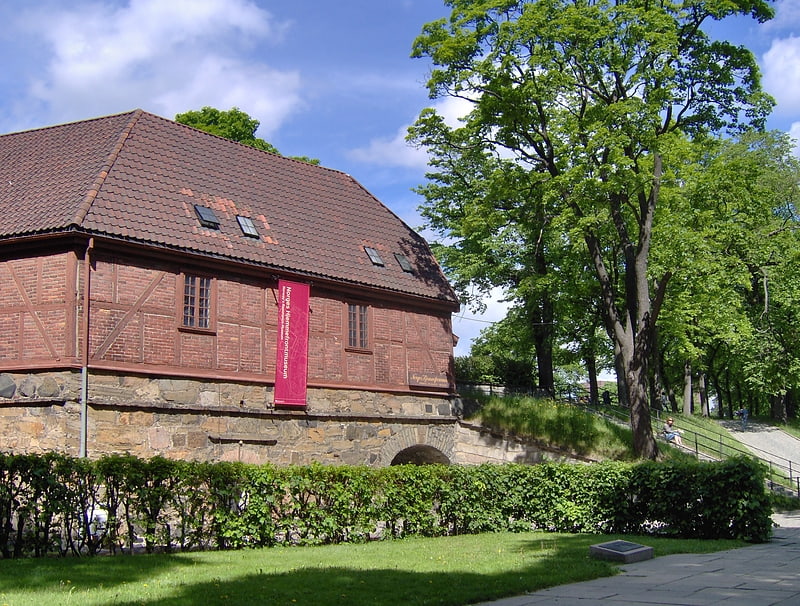
Also known as: Norges Hjemmefrontmuseum
Museum on Nazi occupation during WWII. Norway's Resistance Museum also known as the Norwegian Home Front Museum is a museum located at the Akershus Fortress in Oslo.
The museum collection focuses on Norwegian resistance during the occupation of Norway by Nazi Germany from 1940 to 1945. The museum displays equipment, photos and documents from the war years.
The museum was established as a foundation in 1966. The Museum was opened to the public in May 1970 by Crown Prince Harald of Norway in celebration of the 25th anniversary of Norwegian liberation. Architectural planning was entrusted to Norwegian architect Otto Torgersen (1910-2000) who working together with key personnel representing various branches of the underground forces, produced a chronological gallery through the period from the prelude in the 1930s onwards to liberation in 1945.
The museum's first manager was Knut Haugland, who managed the museum until 1983. Tore Gjelsvik was chairman of the museum's council from 1964 to 1973. Arnfinn Moland was appointed manager of the museum in 1995.[13]
Address: Bygning 21, 0150 Oslo (St Hanshaugen)
Østerdalen
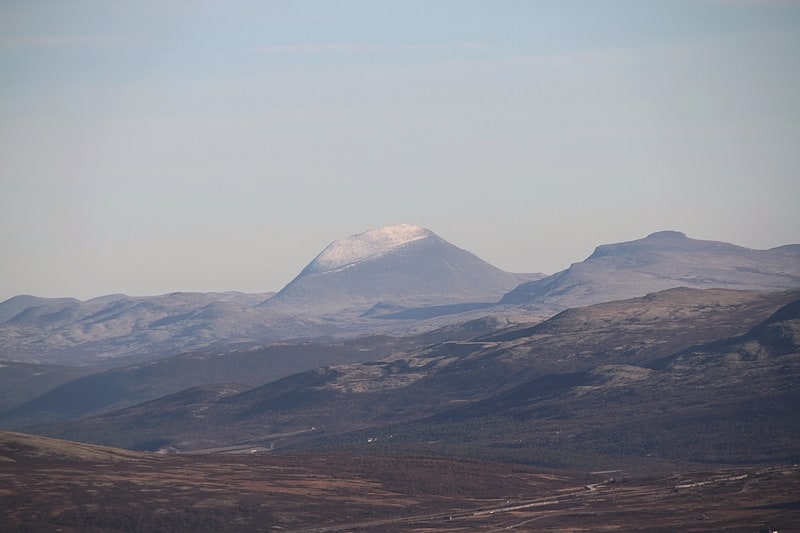
Østerdalen is a valley and traditional district in Innlandet county, in Eastern Norway. This area typically is described as the large Glåma river valley as well as all its tributary valleys. It includes the municipalities Rendalen, Alvdal, Folldal, Tynset, Tolga and Os in the north, Elverum, Stor-Elvdal, Engerdal, Trysil and Åmot in the south. It historically included Särna and Idre, which is now in Sweden.[14]
Palace Park

Also known as: Slottsparken
Lush, tree-filled park around the palace. Palace Park is a public park in the center of Oslo, Norway, surrounding the Royal Palace. It is 22 hectares.[15]
Address: Slottsplassen 1, 0010 Oslo (St Hanshaugen)
Holmenkollbakken

Iconic cutting-edge ski jump . Holmenkollbakken is a large ski jumping hill located at Holmenkollen in Oslo, Norway. It has a hill size of HS134, a construction point of K-120, and a capacity for 70,000 spectators. Holmenkollen has hosted the Holmenkollen Ski Festival since 1892, which since 1980 have been part of the FIS Ski Jumping World Cup and 1983 the FIS Nordic Combined World Cup. It has also hosted the 1952 Winter Olympics and the FIS Nordic World Ski Championships in 1930, 1966, 1982 and 2011.
The hill has been rebuilt 19 times; important upgrades include a stone take-off in 1910, an in-run superstructure in 1914, and a new superstructure in 1928. During the Second World War, the venue was used as a military installation, but upgraded in the late 1940s. Further expansions were made ahead of the 1966 and 1982 World Championships, as well as in 1991. Between 2008 and 2010, the entire structure was demolished and rebuilt. The hill record is held by Robert Johansson at 144.0 meters. The hill is part of Holmenkollen National Arena, which in addition to cross-country and biathlon venues has the normal hill Midtstubakken.[16]
Address: Kongeveien 5, 0787 Oslo
Norwegian Maritime Museum
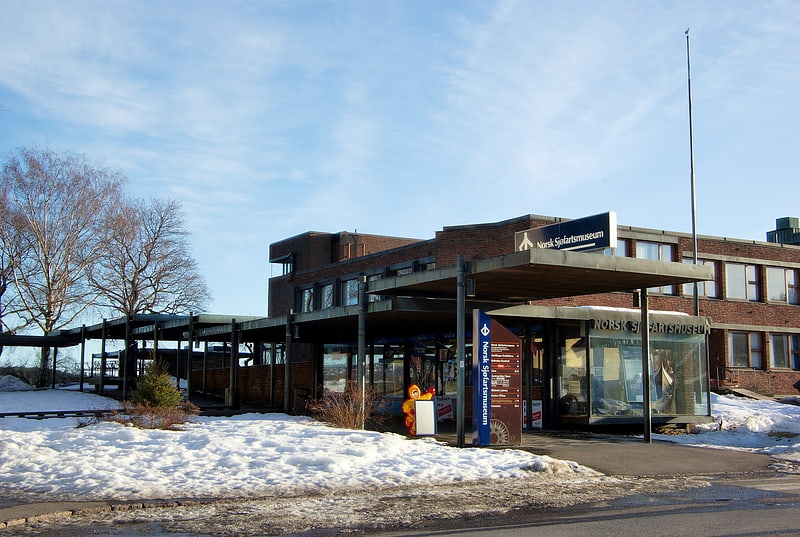
Also known as: Norsk Maritimt Museum
Museum on Norwegian shipping with a cafe. The Norwegian Maritime Museum is located at Bygdøynesveien on the Bygdøy peninsula, on the western side of Oslo, Norway. The Norwegian Maritime Museum is situated near several other museums, including the Fram Museum; the Kon-Tiki Museum; the Norwegian Museum of Cultural History; and the Viking Ship Museum. The Norwegian Maritime Museum is operated in conjunction with Norwegian Folk Museum.[17]
Address: Bygdoeynesveien 37, 0286 Oslo (Frogner)
Hvervenbukta

Hvervenbukta is a swimming and recreation area southeast of the city center of Oslo, Norway, located at the shores of Bunnefjorden in the borough of Søndre Nordstrand, and not far from Ljan and Holmlia.
The area originally belonged to Ljan mansion. The main building here was from 1765, and burned down in 1913. Former Aker municipality took over the properties in 1937. Some of the remaining buildings in the area is now used by artists and artisans.
The site has one of Oslo's most popular beaches, with swimming opportunities along the sandy beach and from the rocks along the fjord. The bathing area in Hvervenbukta has a terrace café and kiosk, toilets and outhouse, picnic tables, showers and drinking-water units. The place is usable for disabled and has a lifeguard during the summer months.
In Hvervenbukta there is also a campsite.[18]
Address: Ljansbrukveien 1, 1250 Oslo
Gamle Museet

Also known as: Astrup Fearnley Museet
Waterfront contemporary art museum. The Astrup Fearnley Museum of Modern Art is a privately owned contemporary art gallery in Oslo in Norway. It was founded and opened to the public in 1993. The collection's main focus is the American appropriation artists from the 1980s, but it is currently developing towards the international contemporary art scene, with artists like Jeff Koons, Richard Prince, Cindy Sherman, Matthew Barney, Tom Sachs, Doug Aitken, Olafur Eliasson, and Cai Guo-Qiang. The museum gives 6-7 temporary exhibitions each year. Astrup Fearnley Museum of Modern Art collaborates with international institutions and produces exhibitions that travel worldwide. In 2012 the museum moved to two new buildings designed by Renzo Piano in Tjuvholmen.[19]
Address: Dronningens gate 4, 0152 Oslo (St Hanshaugen)
National Theatre

Also known as: Nationaltheatret
Performing arts theater in Oslo, Norway. The National Theatre in Oslo is one of Norway's largest and most prominent venues for performance of dramatic arts.[20]
Address: Stortingsgata 17, 0161 Oslo (St Hanshaugen)
The Queen Sonja Art Stable
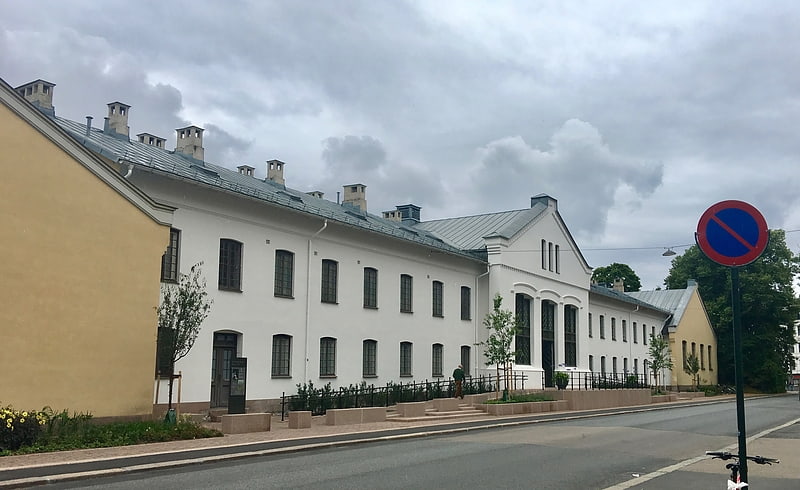
Museum in Oslo, Norway. The Queen Sonja Art Stable is a museum, art gallery and concert hall located in the former stables of the Royal Palace in Oslo.[21]
Address: Royal Palace, entrance from Parkveien,, Oslo (St Hanshaugen)
Armed Forces Museum

Also known as: Forsvarsmuseet
Museum in Oslo, Norway. The Armed Forces Museum of Norway is located at Akershus Castle in Oslo, Norway. Previously it was named Hærmuseet, The Army Museum, therefore, the museum consists of mostly army materiel. The Armed Forces Museum is the main museum sorting under the Norwegian Armed Forces Museum superstructure.[22]
Address: Bygning 62, 0150 Oslo (St Hanshaugen)
Oslo Cathedral
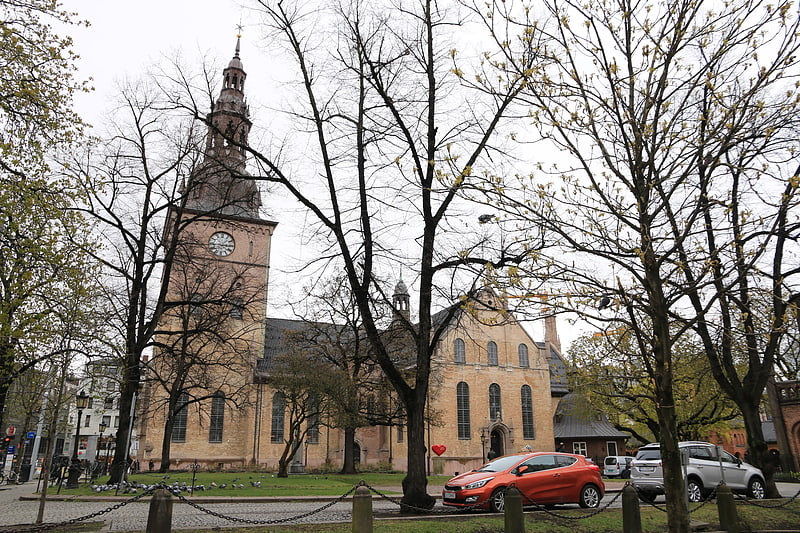
Also known as: Oslo domkirke
17th-century church hosting state events. Oslo Cathedral — formerly Our Savior's Church — is the main church for the Church of Norway Diocese of Oslo, as well as the parish church for downtown Oslo. The present building dates from 1694–1697.
The Norwegian Royal Family and the Norwegian Government use the Cathedral for public events. It was closed for renovation in August 2006 and re-opened with a festive high mass on 18 April 2010.[23]
Address: Karl Johans gate 11, 0154 Oslo (St Hanshaugen)
Holmenkollen Ski Museum
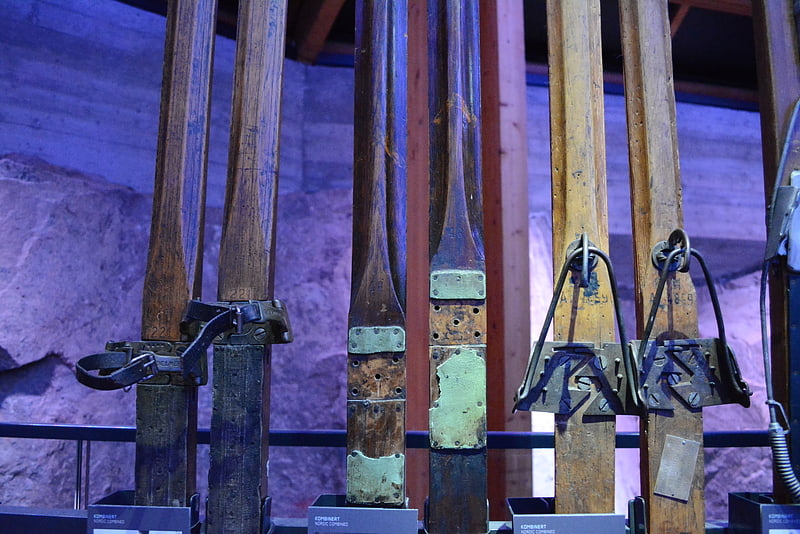
Also known as: Skimuseet
Winter sport and polar expedition exhibits. Holmenkollen Ski Museum is located at the base of the Holmenkollen ski jump in Oslo, Norway.
The Ski Museum was founded in 1923 and is the world's oldest ski museum. The initiator of the museum was the architect Hjalmar Welhaven. His private collection formed the foundation of the antique and historic skis on display at the museum. Until 1951, the collection was housed in a building in the Oslo neighborhood of Frognerseteren. In connection with the rebuilding of Holmenkollbakken in 1951, the museum collection was moved to new premises at Holmenkollbakken.
The museum contains 4,000 years of skiing history, starting with rock carvings dating from the Stone Age. It also displays skiers and skis from the Viking Age. Additionally it displays equipment used in the polar expeditions of both Fridtjof Nansen and Roald Amundsen. The Ski Museum is owned and operated by Skiforeningen. This association is responsible for the organization of sports, activities and events in Holmenkollen National Park.[24]
Address: Kongeveien 5, 0787 Oslo
Munch Museum
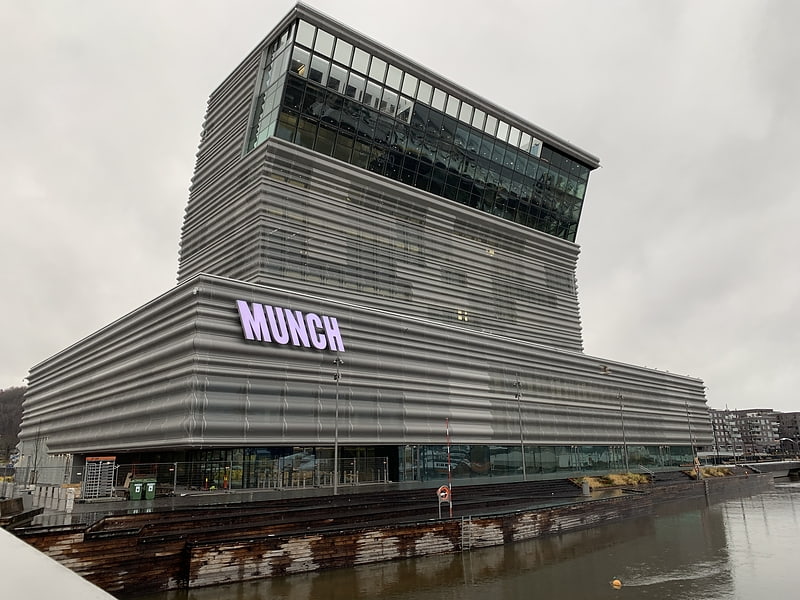
Also known as: Munchmuseet
Museum of Edvard Munch's life and works. Munch Museum, marketed as Munch since 2020, is an art museum in Bjørvika, Oslo, Norway dedicated to the life and works of the Norwegian artist Edvard Munch.
The museum was originally located at Tøyen, which was opened in 1963. The museum moved to the new museum building at Bjørvika, which was opened in 22 October 2021.[25]
Address: Edvard Munchs Plass 1, 0194 Oslo (Gamle Oslo)
Museum of Cultural History
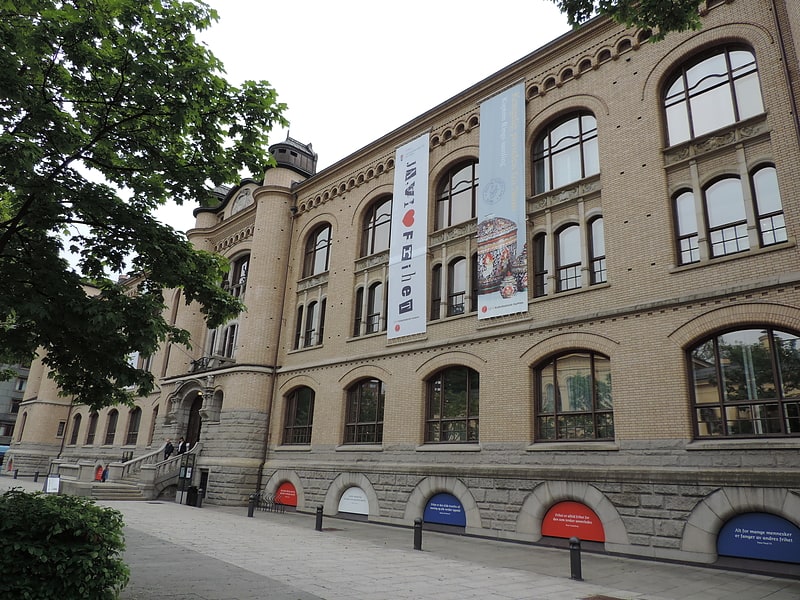
Also known as: Kulturhistorisk museum
Collection of international antiquities. Museum of Cultural History is an association of museums subject to the University of Oslo, Norway. KHM was established in 1999 as Universitetets kulturhistoriske museum with the merging of the bodies Universitetets Oldsaksamling which housed a collection of ancient and medieval objects, Viking Ship Museum at Bygdøy, the Coin Cabinet and Ethnographic Museum. In 2004 the name was changed to Kulturhistorisk museum.
The activities of the Museum of Cultural History are currently localized in four main buildings in Oslo city centre: Historical Museum at Frederiks gate 2 and Frederiks gate 3 and administration at St. Olavs gate 29, as well as the Viking Ship Museum on the Bygdøy peninsula.
The Museum of Cultural History is one of Norway's largest cultural history museums. It holds the country's largest prehistoric and medieval archaeological collections, including the Viking ships at Bygdøy, a substantial collection of medieval church objects, and a rune archive. The museum also has a comprehensive ethnographic collection that includes objects from every continent, as well as Norway's largest collection of historical coins.[26]
Address: Frederiks gate 2, 0164 Oslo (St Hanshaugen)
Kontraskjæret
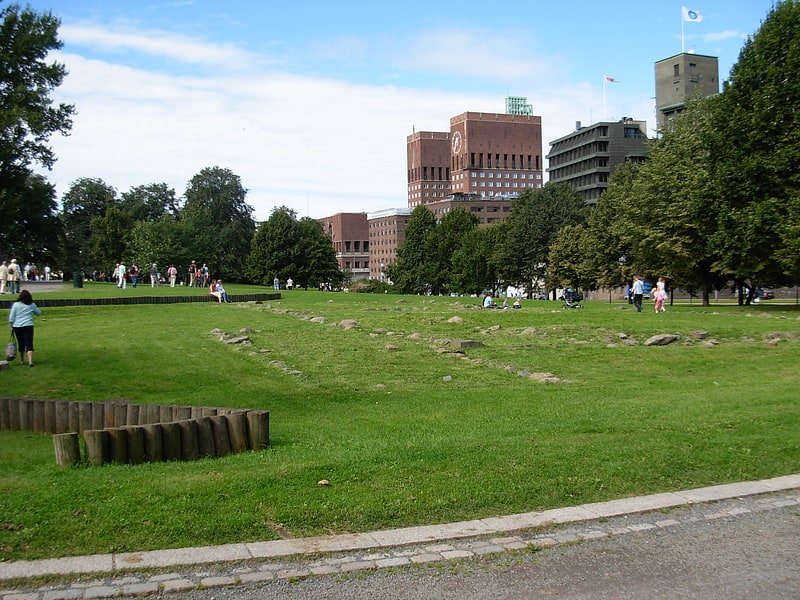
Park in Oslo, Norway. Kontraskjæret is an area in Oslo, Norway.[27]
Fossum Church
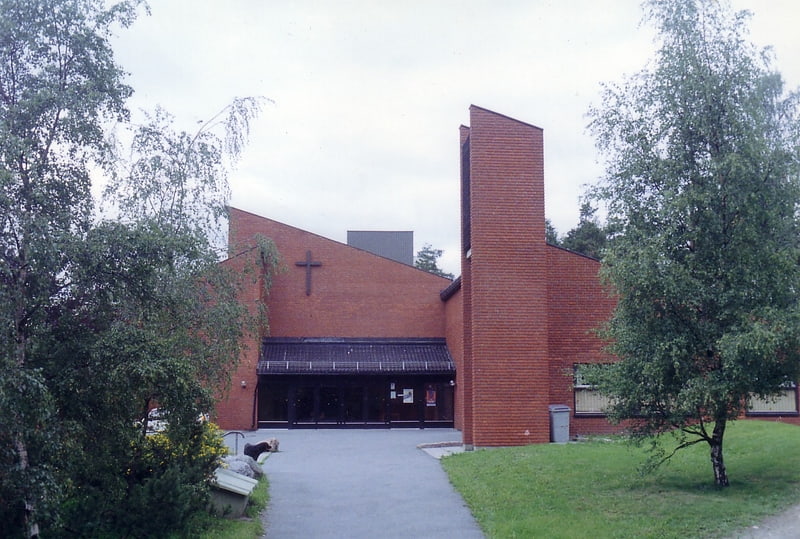
Congregation in Norway. Fossum Church is a church center at Stovner in Oslo, Norway. The church was designed by the architectural firm Anker & Hølaas and created by Selvaagbygg. The church was consecrated in september 1976. Fossum church has 200 seats in the ship and 400 in the side rooms.
The altar decoration was created by Zdenka Rusova in 1976, a brass cross on a painted surface with flame pattern. On the side walls are twelve images with motifs from life of Jesus, created by Ewa Calber Westelius in 1996.
The church organ with 19 voices from 1991, from Ryde & Berg is said to be among Oslo's best.
The church bells are placed in the separate bell tower next to the church. There are 12 bells in the carillon. The bells were cast at Olsen Nauen Bell Foundry in 1976.
Fossum Church is listed by the Norwegian Directorate for Cultural Heritage.[28]
Address: 12 Stovner Senter, Oslo (Stovner)
Oscarshall
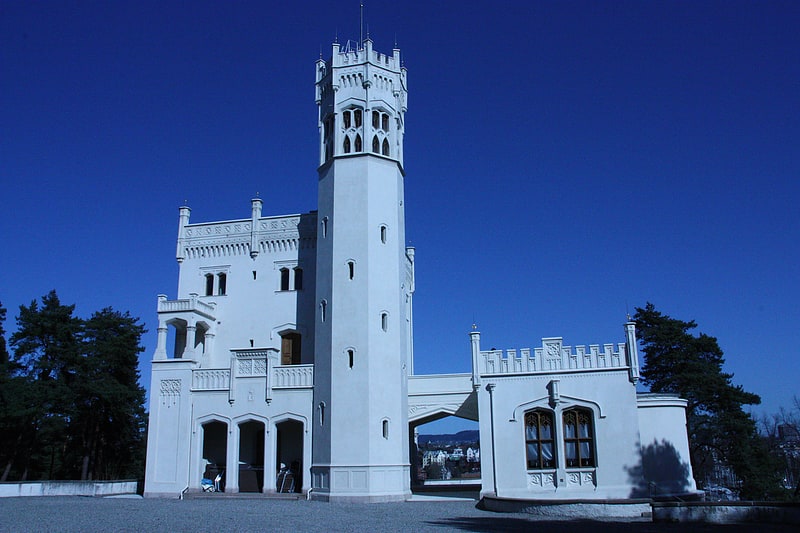
Neo-Gothic palace with tours and shows. Oscarshall Palace is a maison de plaisance located in the small fjord Frognerkilen on Bygdøy in Oslo, Norway.[29]
Address: Oscarshallveien 15, 0287 Oslo (Frogner)
Dyna Lighthouse

Also known as: Dyna fyr
Lighthouse in Norway. Dyna Lighthouse is a coastal lighthouse located on a reef south of Bygdøy, in the Oslofjord in the municipality of Oslo, Norway. It was established in 1875, and automated in 1956.[30]
Address: Indre Oslofjord, Oslo
Rådhusplassen
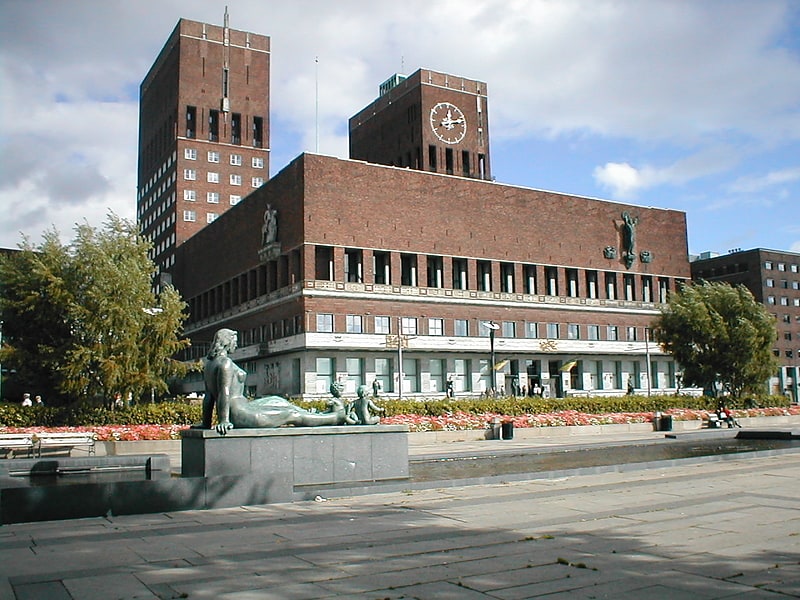
Rådhusplassen is a square located between Oslo City Hall and the Oslofjord in Vika, Oslo, Norway. Previously used as a road and part of European route E18, it has since 1994 served as a recreational area. North of the square stands the city hall, to the south the fjord, to the east Akershus Fortress and to the east the former Western Railway Station.[31]
Natural History Museum at the University of Oslo

Also known as: Naturhistorisk museum
Museum of natural history and gardens. The Natural History Museum at the University of Oslo is Norway's oldest and largest museum of natural history. It is situated in the neighborhood of Tøyen in Oslo, Norway.
It traces its roots to the University Botanical Garden, which was founded near Tøyen Manor in 1814. Museums for zoology, botany and geology were added approximately a hundred years later, when the university campus in central Oslo had become too small for such purposes. Major proponents were Waldemar Christofer Brøgger and Nordal Wille. For most of the twentieth century the museums and botanical garden were organized in five different entities; these were merged on 1 August 1999. The current name dates from 2005.
The Zoological Museum displaying wildlife from Norway as well as the rest of the world. The Botanical Garden contains 35,000 plants, 7,500 species and two exhibition greenhouses. The Geological Museum contain research material of more than 2 million fossils, rock specimens and minerals. A selection of specimens are on display in both the Geological Museum and the Zoological Museum. Among the attractions is the Darwinius masillae fossil "Ida", a primate from the Eocene Epoch.[32]
Address: Sars' gate 1, 0562 Oslo (Grünerløkka)
Cemetery of Our Saviour

Also known as: Vår Frelsers gravlund
Cemetery in Oslo, Norway. The Cemetery of Our Saviour is a cemetery in Oslo, Norway, located north of Hammersborg in Gamle Aker district. It is located adjacent to the older Old Aker Cemetery and was created in 1808 as a result of the great famine and cholera epidemic of the Napoleonic Wars. Its grounds were extended in 1911. The cemetery has been full and thus closed for new graves since 1952, with interment only being allowed in existing family graves. The cemetery includes five sections, including Æreslunden, Norway's main honorary burial ground, and the western, southern, eastern and northern sections. The Cemetery of Our Saviour became the preferred cemetery of bourgeois and other upper-class families. It has many grand tombstones and is the most famous cemetery in Norway.[33]
Address: Akersbakken 32, 0172 Oslo (St Hanshaugen)
Oslo Spektrum
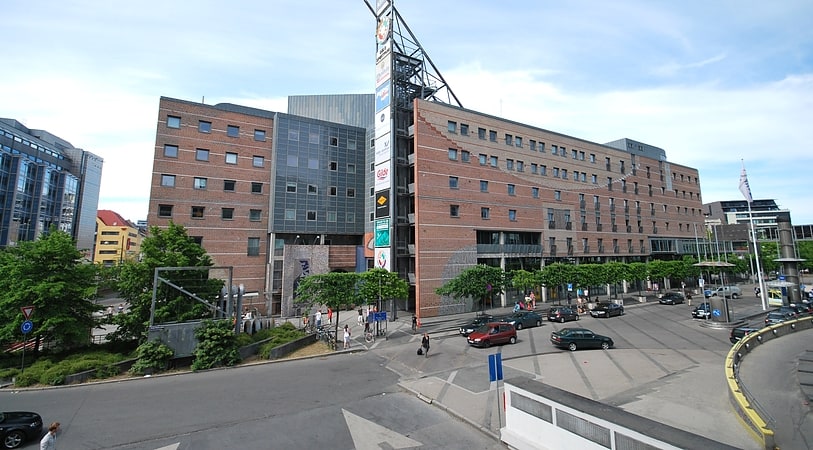
Arena in Oslo, Norway. Oslo Spektrum is a multi-purpose indoor arena located in east central Oslo, Norway that opened in December 1990. It is currently owned and operated by Norges Varemesse. Oslo Spektrum is primarily known for hosting major events such as the annual Nobel Peace Prize Concert, the Eurovision Song Contest 1996, and concerts by artists of national and international fame.
Artists such as Toto, Frank Sinatra, Whitney Houston, Shirley Bassey, Tina Turner, Cher, Mariah Carey, Diana Ross, Britney Spears, Backstreet Boys, Kylie Minogue, Janet Jackson, Shania Twain, Westlife, Selena Gomez, Christina Aguilera, Anastacia, Spice Girls, Lady Gaga, Michael Bublé, Lana Del Rey, Green Day, Metallica, Muse, Rammstein, a-ha, Red Hot Chili Peppers, Snoop Dogg, Ariana Grande, Nicki Minaj and Marcus & Martinus have performed at the venue.[34]
Address: Sonja Henies Plass 2, 0185 Oslo (St Hanshaugen)
Bygdøy Royal Estate

Also known as: Bygdøy kongsgård
Dairy farm in Oslo, Norway. Bygdøy Royal Estate, also known as the Bygdø Royal Farm, is a Kongsgård estate and manor house that occupies a large part of the northwestern part of the Bygdøy peninsula in Oslo, Norway. It is the official summer residence of the King of Norway.[35]
Address: Bygdøyveien 62, Oslo (Frogner)